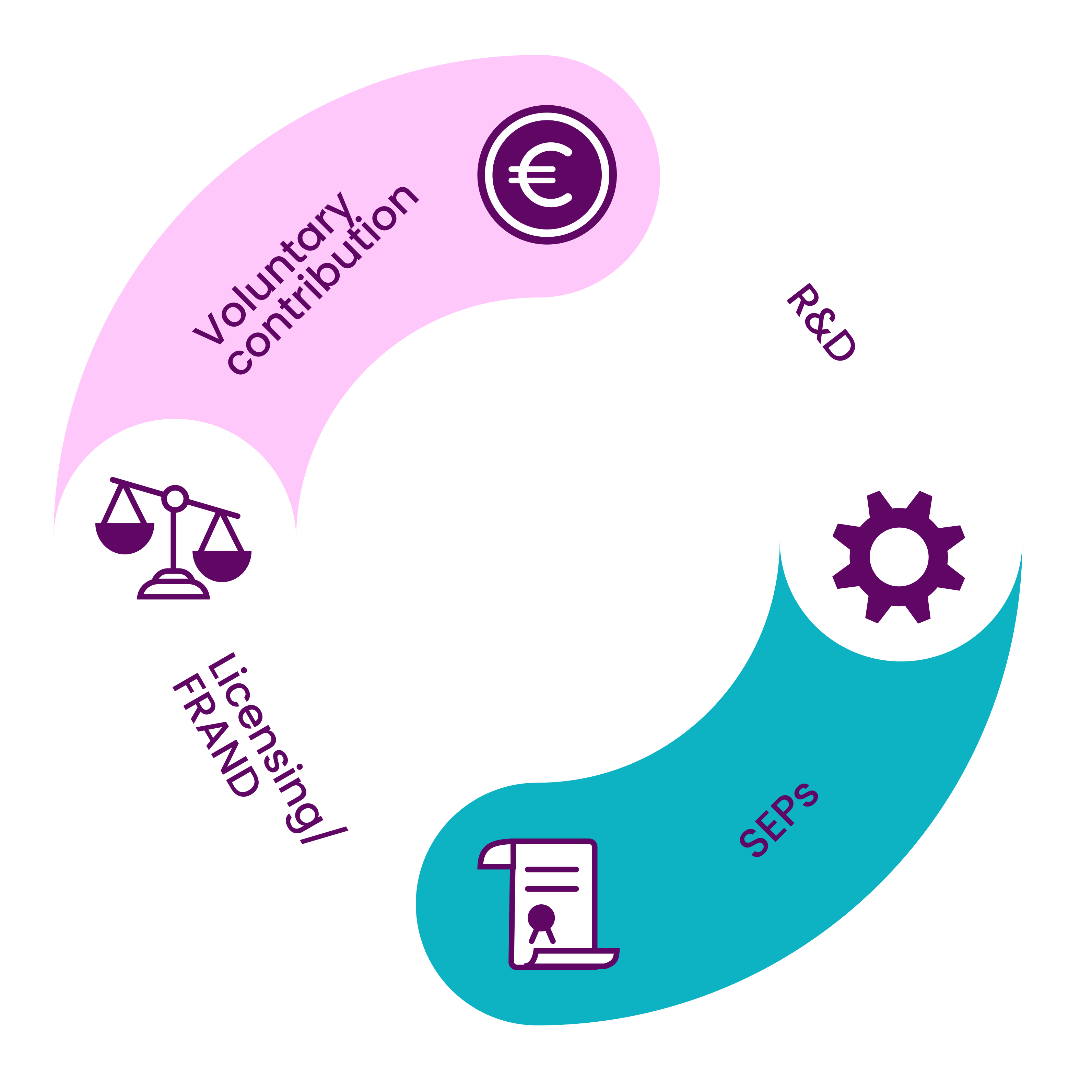Explore IoT and Cellular Standards
4. FRAND: Cycle of Innovation
Cellular standards are developed through an open collaboration between hundreds of actors from industry, universities, and public institutions. The impressive success of cellular standards is due to the following cycle of innovation.

-
R&D
R&D
Each new generation of cellular technology has depended on countless inventions from a handful of innovators around the globe. To conduct their costly and risky R&D activities, these few innovators employ thousands of engineers in multiple countries. Because of their commitment to R&D, these innovators continue to offer pioneering inventions to the cellular industry and drive the development of standards.
-
Voluntary contribution
Voluntary contribution
Part of the standard-development process involves the voluntary contribution by interested stakeholders of their technologies, as those technologies can help to solve technical problems addressed by the standard. Developing the standard that connects people around the world requires years of collaboration amongst hundreds of stakeholders, and the willingness of some of them to share the results of their massive investments in research and development (R&D). Those shared technologies are typically protected by patents.

-
SEPs
SEPs
A standard-essential patent (SEP) is a patented invention incorporated into a standard, which is necessarily used when implementing the standard. SEPs play a key role in this collaborative ecosystem. They facilitate the sharing of innovative ideas, while enabling the patent owner to obtain a reasonable compensation for its contribution to the standard. This is because SEPs are shared with others in exchange of reasonable fees.
In general, patents offer exclusivity rights to their owners, i.e., the right to prevent a third party from using the patented technology without the owner’s authorisation. -
Licensing / FRAND compensation
Licensing / FRAND compensation
Standard Development Organisation normally require actors in the standard-development process to inform the organisation if it owns a patent (or patent application) that may be essential to its implementation (essentiality disclosure). To allow wide dissemination of the standard, SEP owners are encouraged to give access to their essential patents on fair, reasonable, and non-discriminatory (FRAND) terms and conditions. Thus, those implementing SEPs can obtain permission to use such protected technologies through FRAND licensing agreements (either directly or indirectly).
Absent a FRAND commitment, the SDO will seek an alternative technical solution to incorporate into the standard.
In conclusion, the FRAND commitment strikes a delicate and necessary balance between the interests of contributors sharing their technologies to build the standard and the implementers making use of those technologies. Implementers have immediate access to cutting-edge technology under reasonable licensing terms. Thus, they can enter a global market from day one and compete in developing the best solutions. On the other hand, licensing revenues from FRAND licensing create an incentive for companies and other research institutions to continue investing in the development of new technology to contribute to the next generation of the standard.
More broadly, society benefits from innovative solutions and a wider choice of products and services at affordable prices. Imagine this as a cycle of innovation.





